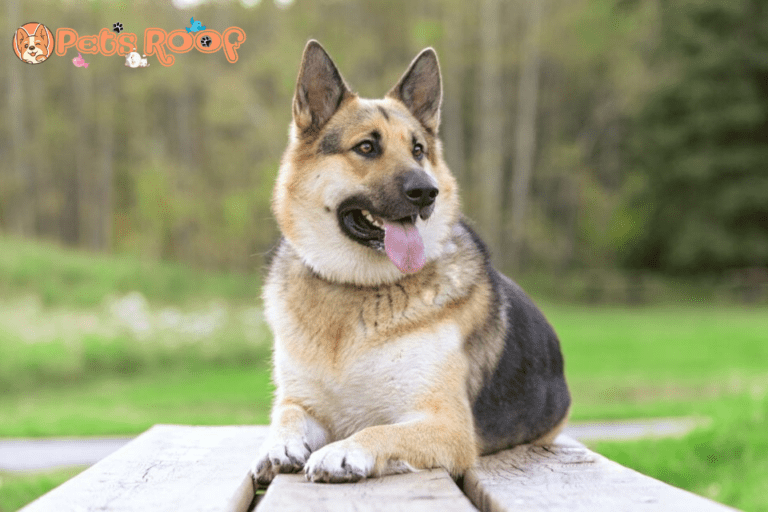The Truth About Dangerous Dogs: Separating Fact from Fiction
Last Updated on August 1, 2023 by Evan
Contents [hide]
- 1 Understanding Dangerous Dogs: Debunking Common Misconceptions
- 2 Understanding Aggression in Dogs: Nature vs. Nurture
- 3 Identifying Warning Signs: Recognizing Aggressive Behavior
- 4 Responsible Dog Ownership: Preventing Dog-Related Incidents
- 5 Factors Influencing Dog Behavior
- 5.1 Genetics: Predisposition to Aggression
- 5.2 Environment: Nurturing a Well-Balanced Dog
- 5.3 Previous Experiences: Trauma and Fear
- 5.4 Owner Responsibility: The Key to Safe and Happy Dogs
- 5.5 Responsible Breeding: A Commitment to Health and Temperament
- 5.6 Avoiding Puppy Mills and Backyard Breeders
- 5.7 Adoption: Giving a Second Chance
- 6 Understanding Dog Aggression: Types and Triggers
- 7 Seeking Professional Help: The Role of Dog Behaviorists and Trainers
- 8 FAQs – What dogs are dangerous?
Understanding Dangerous Dogs: Debunking Common Misconceptions
Misconception 1: All Dogs Are Equally Dangerous
It’s time to debunk a widespread misbelief that has canines in the spotlight – the idea that all dogs possess an inherent capacity for danger and aggression. But let’s set the record straight here: this notion couldn’t be more off base. While it’s undeniable that any dog, regardless of breed, has the potential to nip or exhibit aggressive tendencies, it’s crucial to acknowledge that the vast majority of our furry friends are actually affectionate, docile, and remarkably behaved. It would be unjust and misleading to taint an entire breed’s reputation based solely on the actions of a small fraction within their ranks.
Misconception 2: Breed-Specific Legislation is Effective
Breed-specific legislation (BSL) refers to laws that target specific dog breeds or types, assuming that they are inherently dangerous. However, numerous studies have shown that BSL is ineffective in reducing dog bite incidents. Focusing on a specific breed does not address the root causes of dog aggression, which are often related to irresponsible ownership, lack of socialization, or mistreatment. It is crucial to address these underlying factors rather than targeting specific breeds.
Misconception 3: Size Equals Danger
It’s time to debunk the myth and put an end to the confusion surrounding the impact of a dog’s size on its dangerousness. Yes, larger dogs may possess more physical power, but that doesn’t automatically make them ticking time bombs ready to unleash havoc. Don’t be fooled by appearances; it’s the combination of various factors like genetics, training, and temperament that truly shape a dog’s behavior. Let’s break free from stereotypes and embrace the importance of evaluating dogs based on their unique characteristics rather than relying solely on their size.
Understanding Aggression in Dogs: Nature vs. Nurture
Nature: Genetic Factors
A dog’s behavior, including its tilt towards aggression, is influenced by a captivating interplay of genetics. Packed within their unique genetic makeup, certain breeds boast a greater propensity for exhibiting aggressive tendencies. Nevertheless, traversing the labyrinth of a dog’s behavior requires a delicate navigation beyond genetic markers. Nurturing dogs through responsible breeding methods, ample socialization, and a rigorous training regimen paves the path towards dissolving potential aggression and embracing harmonious companionship.
Nurture: Environmental Factors
The way a pup’s surroundings and early nurturing shape their demeanor cannot be underestimated. Dogs who lack proper socialization, training, or exposure to enriching encounters may manifest aggressive tendencies more frequently. It is therefore imperative for dog owners to create an environment that fosters positive conduct and discourages aggression through deep care and affection.
Identifying Warning Signs: Recognizing Aggressive Behavior
Body Language Cues
Understanding Dog Emotions: Decoding their Unspoken Language
In the captivating world of our furry companions, a symphony of gestures and signals holds the key to their true emotions and subtle intentions. Unraveling this enigmatic language is paramount for dog lovers and those who cross paths with them, ensuring harmonious interactions. Here are a few significant red flags signaling potential aggression, allowing us to navigate the intricate maze of canine communication with clarity and caution:
- Stiff body posture: A dog standing rigidly with tense muscles may be indicating aggression.
When a dog’s fur rises along its back, it can indicate an array of emotions, such as heightened arousal or a potential for aggression. This fascinating phenomenon, known as raised hackles, serves as a visual representation of a dog’s inner turmoil, leaving us captivated and perplexed by their intricate range of feelings. Observing this display of bristling fur prompts us to delve deeper into the mind and behavior of our canine companions, unraveling the many complexities that lie beneath their furry exteriors. - Direct eye contact: Staring directly into a dog’s eyes can be interpreted as a threat, potentially triggering aggression.
- Growling or snarling: Audible vocalizations such as growling or snarling are clear indications of a dog’s aggression.
Contextual Factors
When it comes to determining the level of danger posed by a dog’s aggressive behavior, a thorough grasp of the underlying circumstances is paramount. Fear, territorial instincts, resource possessiveness, and defensive tendencies are all potential triggers for aggression. To accurately assess a dog’s potential threat, it is imperative to take these factors into account and, when needed, seek the expertise of professionals who can provide guidance.
Responsible Dog Ownership: Preventing Dog-Related Incidents
Early Socialization and Training
Proper socialization and training are key factors in preventing dog-related incidents. Exposing puppies to various environments, people, and other animals at an early age helps them develop into well-rounded and confident dogs. Training should focus on positive reinforcement techniques, teaching dogs appropriate behavior and impulse control.
Spaying/Neutering
When it comes to curbing aggression in our furry friends, the needle swings in favor of spaying or neutering, especially for our male companions. The twist lies in the hormonal transformation that occurs after this procedure, as it brings down the probability of various forms of aggressive behavior. Not only does this decision tackle the issue of overpopulation head-on, but it also works its magic in shrinking the population of dogs languishing in shelters. It’s a win-win situation that leaves everyone rolling in curiosity and pondering the possibilities.
Responsible Breeding Practices
Responsible breeders prioritize the health, temperament, and overall well-being of their dogs. They carefully select breeding pairs based on genetic health and temperament testing, aiming to produce puppies with stable and predictable temperaments. Supporting responsible breeders helps ensure that dogs are bred for good behavior and reduces the likelihood of aggression-related issues.
Education and Awareness
In the ever-evolving realm of canine companionship, it becomes increasingly perplexing to navigate the intricate world of responsible dog ownership. The need to unravel the enigma of proper training techniques and decode the intricate nuances of canine behavior grows more urgent each passing day. As guardians of this unparalleled relationship between humans and our furry friends, it is our duty to burst forth with awareness, shedding light on the intricacies that lie beneath the surface. Only by equipping dog owners and the wider public with accurate information can we embark on a transformative journey towards safer and harmonious communities for all creatures involved.
Early Socialization: A Crucial Foundation
Early socialization plays a vital role in shaping a dog’s behavior and preventing aggression. Exposing puppies to a wide range of experiences, environments, people, and animals during their critical developmental period helps them become well-adjusted adults. Through positive interactions and controlled introductions, puppies learn appropriate social skills and develop confidence in various situations. Socialization should continue throughout a dog’s life to reinforce positive behaviors and reduce the likelihood of aggression.
Positive Reinforcement Training: Building Trust and Confidence
Unlock your dog’s true potential with the power of positive reinforcement! By utilizing techniques that reward good behavior with treats, praise, and play, you can shape your furry friend into the perfect companion. This approach not only builds trust and strengthens your bond, but it also prevents the development of aggression and helps address any existing behavioral issues. Say goodbye to outdated and harsh training methods and embrace the wonders of positive reinforcement for a happier, healthier, and well-behaved pup!
Behavior Modification Techniques: Addressing Aggression
In cases where a dog already displays aggressive behavior, behavior modification techniques can be employed to address and manage the issue. These techniques, often implemented under the guidance of a professional dog behaviorist or trainer, focus on identifying the underlying causes of aggression and modifying the dog’s responses. This may involve desensitization and counterconditioning exercises, where the dog is gradually exposed to triggering stimuli in a controlled and positive manner. Behavior modification techniques aim to change the dog’s emotional response to specific triggers and teach alternative, non-aggressive behaviors.
Factors Influencing Dog Behavior
Genetics: Predisposition to Aggression
When it comes to canine behavior, the relationship between genetics and aggression can often perplex even the most seasoned dog enthusiasts. While it’s true that genetics can play a role in predisposing certain breeds to aggression, it would be remiss to inflate the influence of genes alone. The intricate dance of nature and nurture intertwines to create the complex tapestry of a dog’s behavior. Responsible breeders, cognizant of the importance of temperament and well-being, diligently navigate this elusive terrain to minimize the risk of aggression in their lineages.
Environment: Nurturing a Well-Balanced Dog
A dog’s environment plays a significant role in their behavior and can either promote or discourage aggression. Dogs that are provided with a loving, structured, and positive environment are more likely to exhibit well-balanced behavior. Factors such as proper socialization, consistent training, mental stimulation, and a stable home environment contribute to a dog’s overall well-being and reduce the likelihood of developing aggressive tendencies.
Previous Experiences: Trauma and Fear
Traumatic experiences, abuse, or neglect can have a profound impact on a dog’s behavior, potentially leading to fear-based aggression. Dogs that have been subjected to mistreatment may display defensive behavior as a result of their past experiences. Understanding and addressing the underlying trauma through patient, gentle, and positive reinforcement-based training can help these dogs overcome their fears and regain trust in humans.
Owner Responsibility: The Key to Safe and Happy Dogs
Ensuring a peaceful coexistence between canine companions and their human counterparts is a deeply-rooted responsibility that cannot be taken lightly. At the heart of this delicate balance lies the notion of responsible ownership, the cornerstone upon which safety and harmony are built. To nurture the well-being of these loyal creatures, owners are called upon to diligently prioritize their physical and mental health, extending a caring hand in the form of balanced nutrition, routine exercise, and regular veterinary check-ups. Moreover, an unwavering commitment to ongoing training and socialization allows owners to gain invaluable insights into their dog’s intricate needs, swiftly addressing any inklings of worrisome behavior that may arise.
Responsible Breeding: A Commitment to Health and Temperament
Dog breeders who truly care about the welfare of their dogs make it their top priority to safeguard their health, temperament, and overall happiness. With meticulous precision, they engage in an extensive process of handpicking mating pairs, conducting rigorous genetic health tests, and assessing temperaments to guarantee that future generations inherit the most desirable qualities. By exclusively breeding from individuals with exceptional stability and soundness, these conscientious breeders aim to produce puppies with consistent temperaments and minimize the potential for aggression-related concerns.
Avoiding Puppy Mills and Backyard Breeders
The well-being of our furry friends can sometimes be overshadowed by the pursuit of profit, as puppy mills and backyard breeders prioritize their bottom line over the welfare of dogs. These establishments often resort to questionable practices, with overcrowding, insufficient healthcare, and minimal socialization becoming the unfortunate norm. As a consequence, the innocent pups that emerge from these places are more prone to behavioral issues, including aggression, resulting from their subpar breeding standards and inadequate early life experiences. It is crucial for us to support reputable breeders who prioritize ethical practices, safeguarding the health and behavior of future generations of our beloved canine companions.
Adoption: Giving a Second Chance
Adopting a dog from a reputable shelter or rescue organization is another way to promote responsible pet ownership and potentially save a life. Many dogs in shelters are loving and well-behaved, and their behavioral history is often known to the shelter staff. By adopting a dog, individuals can provide a second chance for a deserving animal and contribute to reducing the number of dogs in need of homes.
Understanding Dog Aggression: Types and Triggers
Fear Aggression: A Response to Perceived Threats
In the complex realm of canine behavior, fear aggression emerges as a contentious force, compelling dogs to react defensively when confronted with perceived threats. By assuming a protective stance or resorting to communication through aggression, dogs attempt to safeguard their well-being and express their unease. The critical task at hand lies in unraveling the intricate web of fear triggers, employing desensitization and counterconditioning techniques to gradually alleviate anxiety and empower the dog’s sense of security in formerly distressing circumstances.
Resource Guarding: Protecting Valuables
It’s no secret that our furry friends can sometimes get a little possessive over their belongings. From food bowls to chew toys, some dogs just don’t want to share. But what happens when this behavior escalates into full-blown aggression? Enter resource guarding, a perplexing behavior that can leave both humans and pets feeling trapped.
Territorial Aggression: Defending Boundaries
When a dog becomes a fierce guardian of its domain, that’s what we call territorial aggression. From barks that could shatter eardrums to menacing growls that send shivers down your spine, these dogs will stop at nothing to protect their turf. The good news is, with some socialization and training, we can teach them to discern real danger from the mundane. Let’s create a harmonious environment by introducing our canine companions to new experiences and forging a positive relationship with potential intruders.
Dog-Dog Aggression: Interactions with Other Dogs
As dog lovers, we understand that the furry friends we adore can sometimes have their own share of disagreements. Dog aggression, often stemming from past experiences or insufficient socialization, can be perplexing. However, by becoming fluent in the language of canine body cues and carefully managing their interactions, responsible owners can create a harmonious environment that fosters positive dog-dog relationships and prioritizes safety for all.
Seeking Professional Help: The Role of Dog Behaviorists and Trainers
When to Consult a Professional
When it comes to dealing with doggie aggression, it’s essential to turn to the pros for help and support. These seasoned experts, known as dog behaviorists and trainers, are the gurus of all things aggression-related. They possess the superpower of delving deep into the root causes of aggression, crafting tailor-made behavior modification strategies, and offering unwavering assistance to guarantee the happiness and security of both the furry friend and their beloved human clan.
Positive Reinforcement-Based Training Methods
When it comes to handling aggression in dogs, experts in dog behavior and training advocate for the power of positivity. By utilizing techniques rooted in positive reinforcement, such as treats, praise, and play, trainers aim to encourage desired behaviors and steer dogs away from negative ones. This approach not only fosters trust and strengthens the bond between dogs and their owners but also equips dogs with valuable self-control and impulse management skills.
Medication as a Supplemental Tool
When addressing aggression in our beloved furry friends, there are instances where the guidance of a skilled veterinarian or veterinary behaviorist calls for the inclusion of medication in the overall treatment strategy. This pharmacological approach, when combined with other behavior modification techniques, seeks to alleviate anxiety, address underlying health concerns, and enhance the dog’s receptiveness to behavioral interventions. However, it is imperative to engage in close collaboration with a trusted expert in order to ascertain the suitable medication and dosage tailored to the unique needs of each dog.
FAQs – What dogs are dangerous?
What factors determine if a dog breed is considered dangerous?
Determining the dangerousness of a dog breed is a complex task, influenced by a myriad of factors that spark curiosity. These factors, such as a breed’s aggressive past or distinctive behavioral traits, legal regulations, the temperament and socialization of each individual dog, the quality of training, and the environment it finds itself in, contribute to the enigmatic nature of this classification. It’s important to keep in mind that not all dogs within a specific breed exhibit dangerous tendencies, for their character is as diverse as the enigmatic jigsaw puzzle of existence itself.
Are there specific dog breeds that are generally considered to be dangerous?
When it comes to discussing dog breeds and aggression, it’s a complex matter that requires careful consideration. While it’s true that certain breeds have been linked to higher levels of aggression, it is imperative to remember that aggression can manifest in dogs of any breed or mix. It’s crucial to take into account factors such as the dog’s unique temperament and upbringing, as these play a significant role in behavior. While breeds like the Pit Bull Terrier, Rottweiler, German Shepherd, Doberman Pinscher, and Akita have had historical associations with aggression, it’s important to approach each dog as an individual and avoid making assumptions based solely on breed.
Can dangerous dogs be safe in the right environment?
Yes, even dogs with a reputation for being dangerous can be safe and well-behaved when provided with the proper environment, care, and training. Responsible ownership, committed socialization efforts, and appropriate training can greatly influence a dog’s behavior and temperament. It is essential to understand and meet the specific needs of a potentially dangerous dog, as well as to minimize exposure to potential triggers or stressful situations. Additionally, following local laws and regulations regarding dangerous dog breeds may help prevent incidents and ensure the safety of both the dog and the community.
How can I ensure my dog is not dangerous?
Ensuring that your dog is not dangerous involves a combination of factors. First and foremost, it is essential to select a dog that aligns with your lifestyle, experience, and ability to meet its specific needs. Providing early and ongoing socialization, positive reinforcement-based training, and regular exercise can help create a well-rounded and well-behaved companion. Additionally, neutering or spaying your dog can reduce certain behavioral issues. Pay attention to any signs of aggression, fear, or anxiety in your dog, and address them promptly through professional assistance if needed. Responsible ownership, including proper containment, supervision, and adhering to local regulations, is crucial to prevent potential incidents and ensure the safety of both your dog and others.






